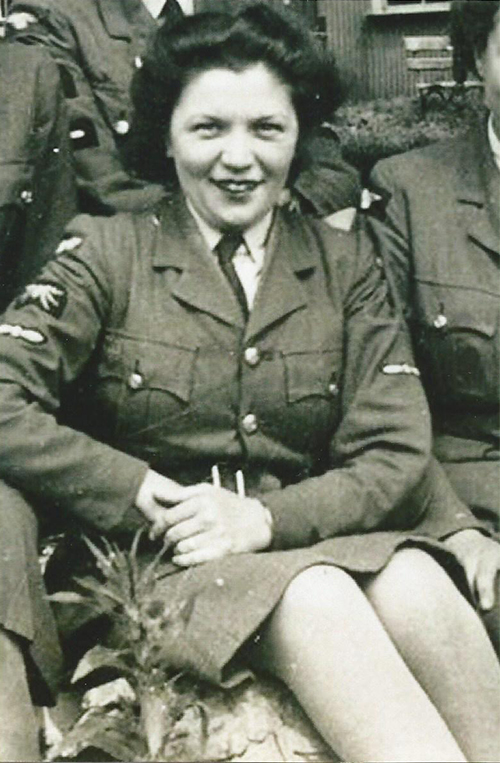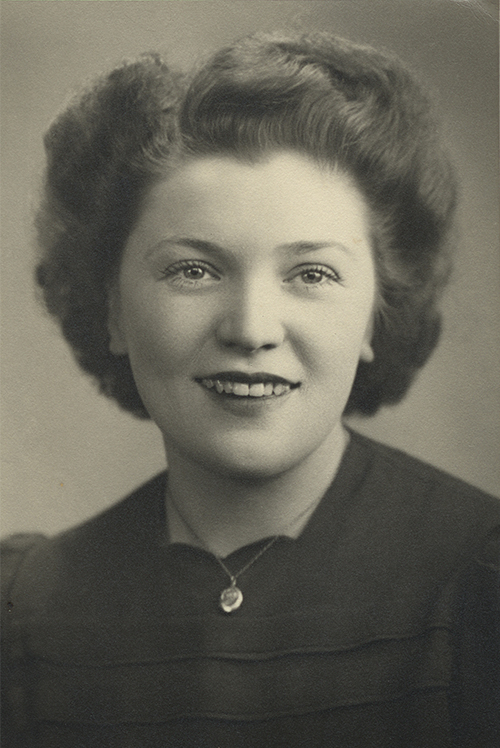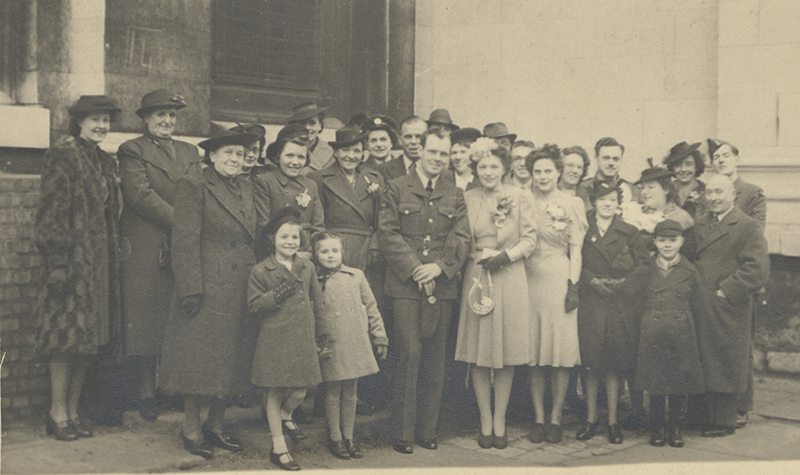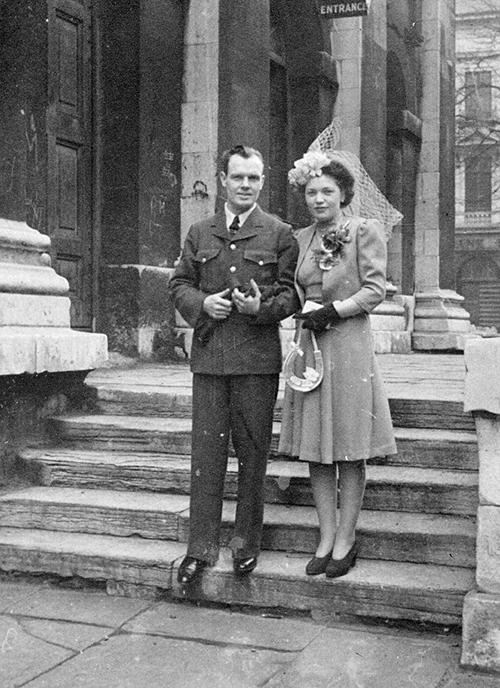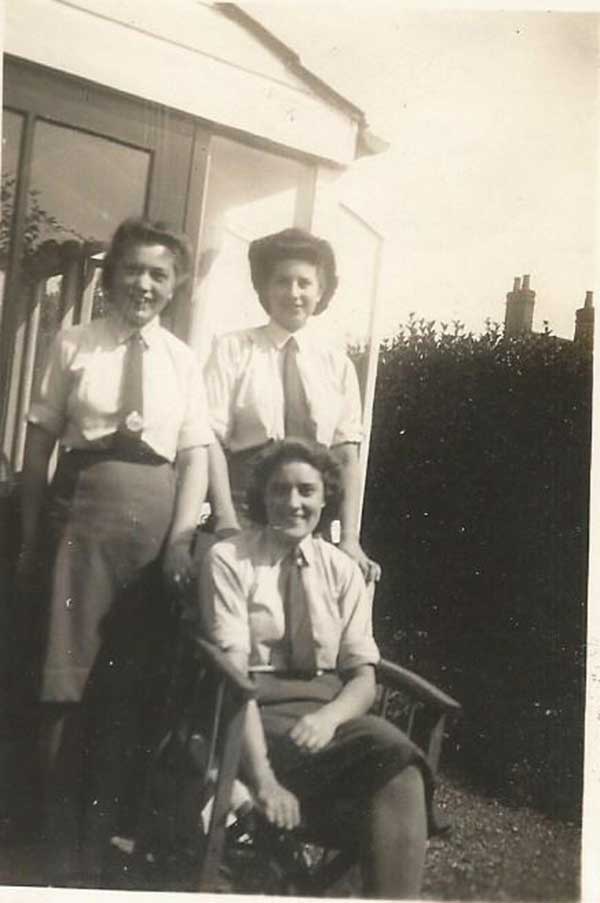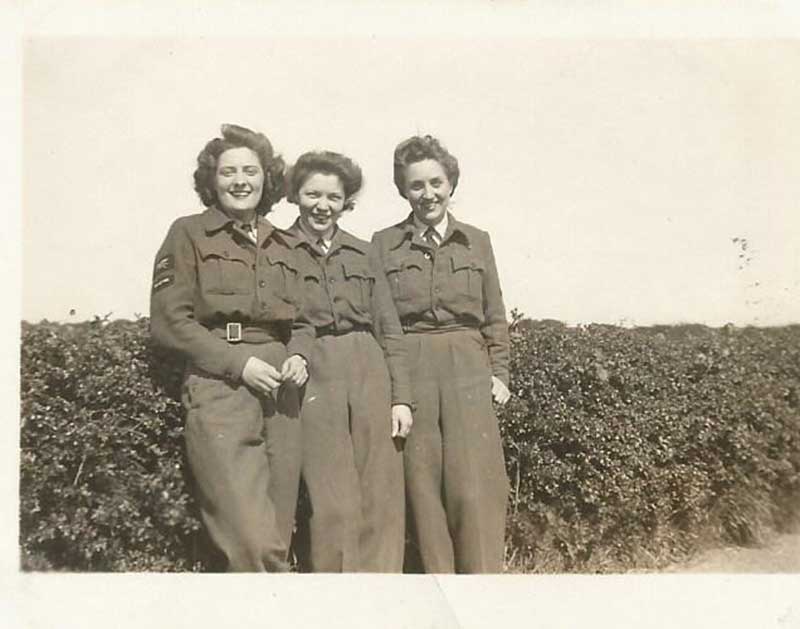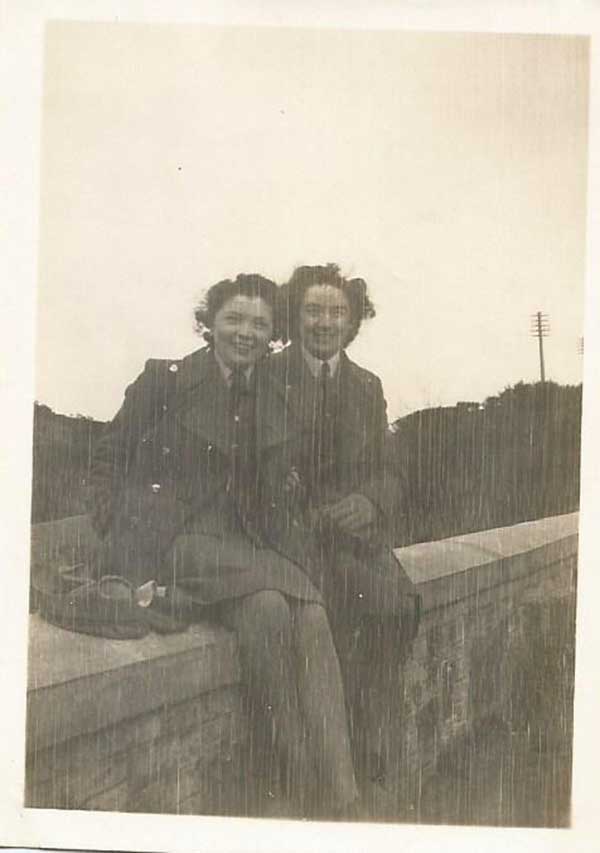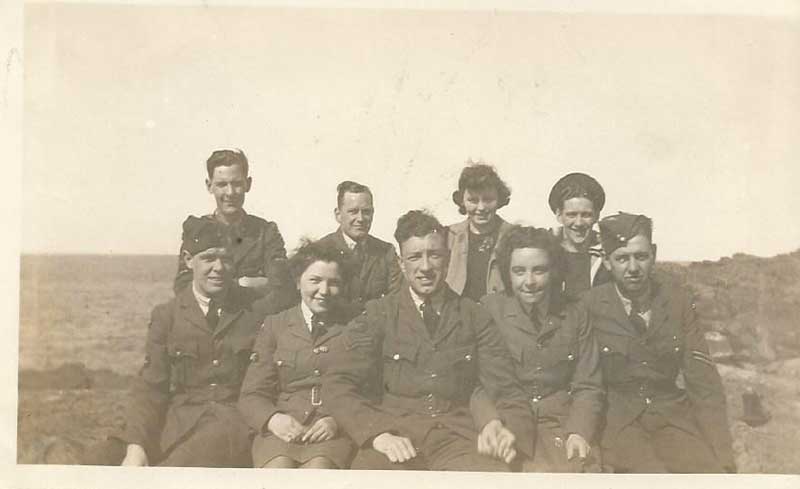Wall of Service
Column
23
Row
5
Reflections of a Radar Operator
I was asked to tell you what I did during World War 2. When I was 19 years old, I was notified, as were all others my age in England, to attend an interview to decide what I would be doing to help the war effort. There were choices like factories, government office jobs, land army, the military and more. I decided to join the Royal Air Force and after some tests was asked if I would like to become a Radar Operator. I said ‘what’s that’ as I imagine most people did since Radar was not in our vocabulary and was entirely secret! There was no explanation given just that I would find it interesting, and I did. I was sent on a 6 week course to learn all about it. One drawback was that you could not go over your notes in the evening or study for a test as you were not allowed to take a paper or note book out of the building where the lectures were given – it was locked up tight – so secretive.
I was then posted to a small Radar station on the east coast of Scotland - a small fishing village. The air force station was up on the hill with an antenna that turned 24-7, all shrouded in secrecy, and in the village there were many rumours of what went on up there! The antenna was transmitting its beams out to sea and when the range of the beam was weakening in strength the transmission from another station down the coast was doing the same thing and covering its part of the coast. These stations were built around the coast of England, Scotland, Wales and Ireland so the whole coastline of the British Isles was transmitting these beams out to the North Sea, English Channel, Irish Sea, and Atlantic Ocean. When a plane or planes hit the beam, we operators immediately saw its position on the grid on our screen, read it into our mouthpiece which was heard in the filter room. When planes were identified as enemy, filter room immediately notified fighter squadron and fighters were airborne very quickly. When the Germans started their bombing raids in earnest, the stations in the southeast coast were kept very busy.
Fighters were sent to intercept and they stopped some of the bombers but there were not enough fighters so some always got through. This defence system around the coast was a crucial part of the war effort but of course was never acknowledged until after the war. Even then, Radar Vets were sworn to an oath of secrecy which was not fully lifted for 50 years.
Can you imagine in this day and age, something involving so many people being kept a secret at all?!! The ‘Secrets of Radar’ Museum in our London, ON has a great deal to show. There was quite a Canadian connection since 5000 Canadian Airmen trained, at the request of the British Government, to become Radar Mechanics (my husband, Arnold Shewan, was one of them). On reaching England they were attached to the RAF and finally sent to the coastal stations.
After a year in Scotland I was sent on another radar course; this one very different as it was radar on the offensive. This radar was called Oboe. Our equipment was radio connected to Mosquito fighters which flew ahead of the Lancaster bombers. When the Mosquito was within a certain range of the target they would switch on their special equipment and would hear a note (in someone’s mind similar to an Oboe) and the note would change if he wavered off course. At that moment we would be busy in the Operations room working out when he would be over the target, taking into account the speed of the aircraft, the wind velocity etc. I must mention here that all this was worked out on a slide rule, something unheard of these days and how much easier it would have been with the modern calculator. I may still have a slide rule at home but have no idea now how to use it! At the precise moment of being over the target we would signal the aircraft, by cutting off the sound or tone, to drop his flares. They were a special type of flare that could not be replicated by the Nazis. The Nazis had been setting dummy flares to deceive our bomber pilots. Since the bombers were being bombarded with guns and fighters, the flares made it easier, enabling them to do precision bombing. It was said that Oboe was the most accurate bombing system used in the war.
My lasting memory of the Oboe connection was in the early part of ’45. The people in the Netherlands had been surrounded by the German army for months with no food getting through to them. I understand they were eating raw beets, tulip bulbs, and I had read where cats and dogs had disappeared. The exiled Dutch Government, the British Government and the Red Cross were desperate to get food flown in to the people and had been trying to negotiate a treaty with the Germans to let planes fly in supplies. This had not yet been signed when one Lancaster was sent in, flying very low to drop slings of food and see if the Germans would be shooting. They didn’t shoot, and lots of planes followed. The treaty was signed a few days later.
I’ll finish with 2 quotes from newspapers:
The 1st is from April 1945 in London England. The headline reads “RAF “bombs” Holland with tons of food”.
We Radar operators were responsible for telling the (quote) “Pathfinders (where to drop) their coloured markers in the target areas and the Lancasters, flying at less than 500 feet, followed with food”.(unquote) The article goes on to say “ Every Lancaster was equipped with special slings carrying bags of food….some carrying enough to nourish 3000 people for a day.” This went on for days and although the radar operators only had a small part it was a wonderful feeling of having helped.
The 2nd article is from our London Free Press, April 30 1998:
It shows a picture of a ‘reunion’ dinner for the members of the 1st Lancaster bomber crew to fly food into Holland during ‘Operation Manna’. That flight was the test run. I quote: “A 15 year old boy, on the brink of starvation, sees the plane and, fearing it’s there to drop bombs, throws himself into a ditch. He lifts his head and watches as the plane drops not bombs, but bundles of food. The plane’s so close he can see a crew member waving at him…..That boy, now living in Canada, held a dinner in London Ontario to honour 5 members of the crew of that plane.”
One of the crew says in the article, “Everybody in the crew was relieved we had done something to help the Dutch people. It’s one of my happiest memories of the war.” Each member of this crew was between the ages of 18 and 21 - very similar to many of the VETS we remember on this Remembrance Day.
Grace Shewan: REMEMBRANCE DAY Nov.10, 2013
